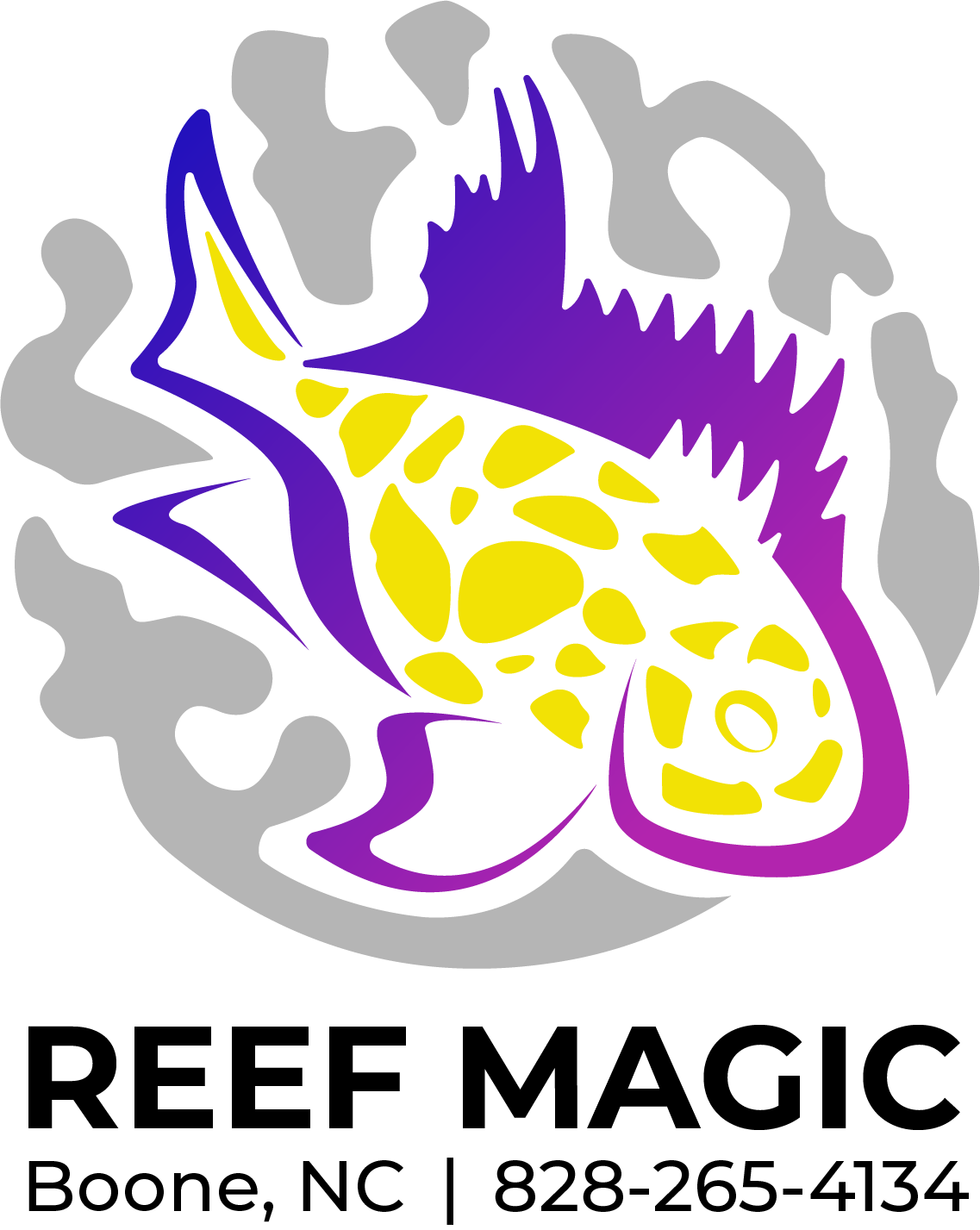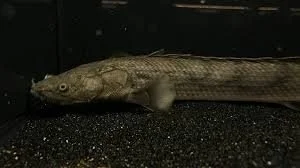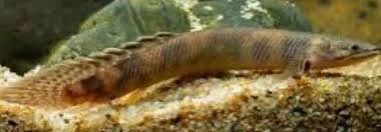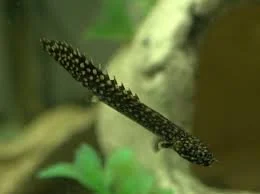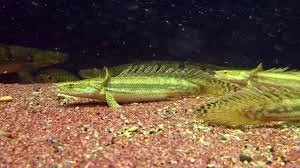 Image 1 of 1
Image 1 of 1


Bichir- Lapradei Wild XLarge
The Lapradei Bichir (Polypterus lapradei) is a prehistoric, eel-like fish native to African rivers, including some in Nigeria. It features an elongated, subcylindrical body covered in thick, armor-like ganoid scales, a distinct lower jaw that is longer than the upper jaw, and a unique dorsal fin made up of many small finlets. This carnivore has excellent smell due to its prominent nostrils and can breathe air with its lung-like swim bladder, making it hardy in low-oxygen environments. It is semi-aggressive and can grow up to 28 inches or more.
Physical description
Body: Elongated, subcylindrical, and covered in thick, armor-like ganoid scales.
Head: Flat with prominent external nostrils for a keen sense of smell, used to compensate for poor eyesight.
Jaw: Features a "lower jaw" with the lower jaw slightly longer than the upper jaw.
Fins: A series of dorsal finlets that form a single dorsal fin, which can be raised or lowered. The pectoral fins are strong and muscular.
Coloration: Varies by region but typically includes a brownish-green or gray-green body with darker, longitudinal bands and irregular vertical stripes. The belly is often a lighter gray to white color.
Habitat and distribution
Habitat: Slow-moving rivers, swamps, and streams with sandy or muddy bottoms.
Distribution: Widely distributed across central and western Africa, with populations in the Congo and Niger river basins. The specific locale for the fish described is from regions like the Ughelli area of Nigeria.
Behavior and diet
Behavior: Semi-aggressive and predatory, it will eat any tank mate that fits in its mouth but is generally not aggressive toward larger fish. It can sometimes be seen basking near the surface of the water.
Diet: Carnivorous, feeding on small fish, crustaceans, and insects. In aquariums, it requires a protein-rich diet of live or frozen foods like worms, shrimp, and fish.
Other facts
Size: Can reach lengths of over 2 feet (28 inches).
Lifespan: With proper care, can live for several decades.
Breathing: Possesses a modified swim bladder that functions as a lung, allowing it to breathe air and survive in low-oxygen water.
Compatibility: Best kept with other large, non-aggressive or similarly-sized fish. Avoid housing with small fish or overly aggressive fish that may nip at its fins.
The Lapradei Bichir (Polypterus lapradei) is a prehistoric, eel-like fish native to African rivers, including some in Nigeria. It features an elongated, subcylindrical body covered in thick, armor-like ganoid scales, a distinct lower jaw that is longer than the upper jaw, and a unique dorsal fin made up of many small finlets. This carnivore has excellent smell due to its prominent nostrils and can breathe air with its lung-like swim bladder, making it hardy in low-oxygen environments. It is semi-aggressive and can grow up to 28 inches or more.
Physical description
Body: Elongated, subcylindrical, and covered in thick, armor-like ganoid scales.
Head: Flat with prominent external nostrils for a keen sense of smell, used to compensate for poor eyesight.
Jaw: Features a "lower jaw" with the lower jaw slightly longer than the upper jaw.
Fins: A series of dorsal finlets that form a single dorsal fin, which can be raised or lowered. The pectoral fins are strong and muscular.
Coloration: Varies by region but typically includes a brownish-green or gray-green body with darker, longitudinal bands and irregular vertical stripes. The belly is often a lighter gray to white color.
Habitat and distribution
Habitat: Slow-moving rivers, swamps, and streams with sandy or muddy bottoms.
Distribution: Widely distributed across central and western Africa, with populations in the Congo and Niger river basins. The specific locale for the fish described is from regions like the Ughelli area of Nigeria.
Behavior and diet
Behavior: Semi-aggressive and predatory, it will eat any tank mate that fits in its mouth but is generally not aggressive toward larger fish. It can sometimes be seen basking near the surface of the water.
Diet: Carnivorous, feeding on small fish, crustaceans, and insects. In aquariums, it requires a protein-rich diet of live or frozen foods like worms, shrimp, and fish.
Other facts
Size: Can reach lengths of over 2 feet (28 inches).
Lifespan: With proper care, can live for several decades.
Breathing: Possesses a modified swim bladder that functions as a lung, allowing it to breathe air and survive in low-oxygen water.
Compatibility: Best kept with other large, non-aggressive or similarly-sized fish. Avoid housing with small fish or overly aggressive fish that may nip at its fins.

